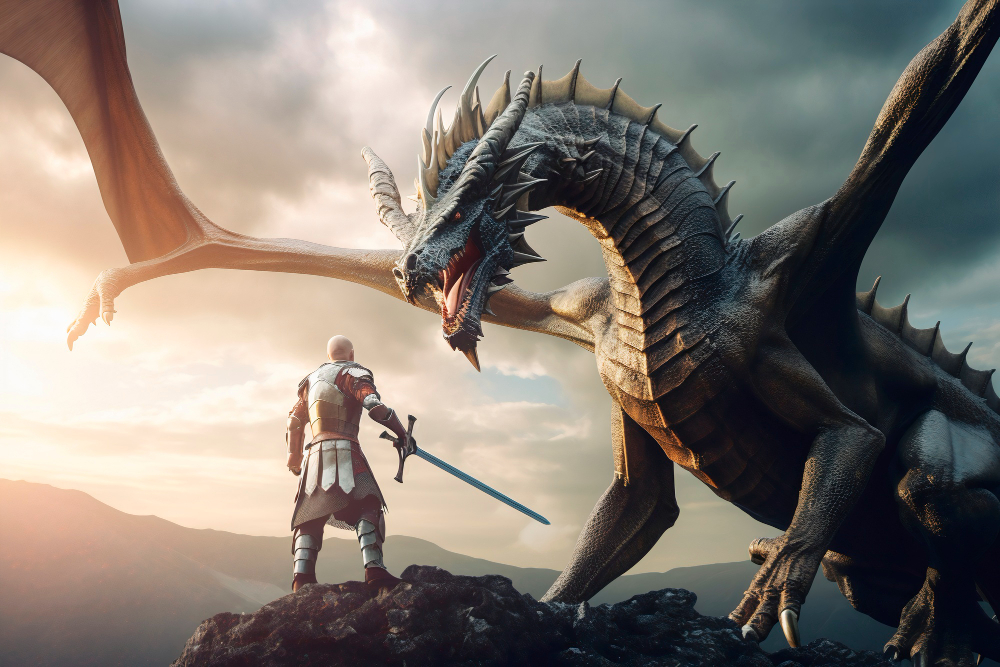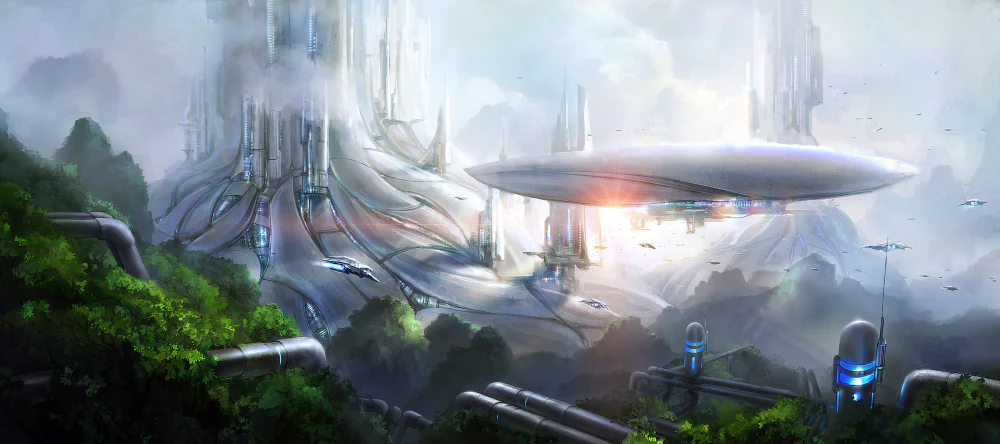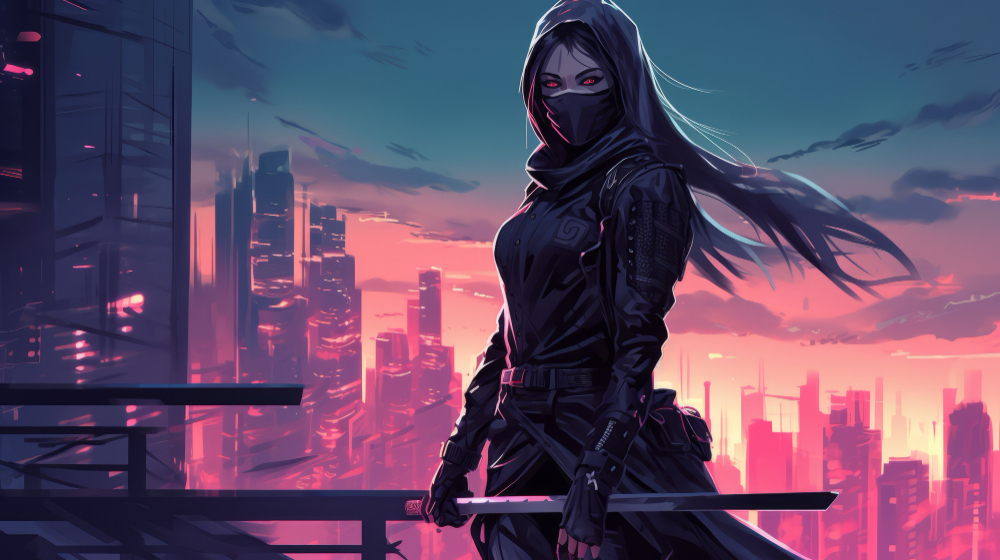Being at the forefront of developments in the rapidly changing world of digital entertainment is not only desirable but also vital. For those who are intrigued by the graphics of video games, the game developers, and the die-hard fans of games, diving into the fascinating growth of 3D art styles is a smart move. These 3D art styles have totally changed how games look and feel, making them more interesting and fun. It’s like the magic behind the scenes that makes game characters look real and the game worlds super exciting. So, staying in the loop with these changes is not just fun; it helps you to contribute to the amazing world of video game creativity.
Let us look at the 3D art styles for video games in this blog, revealing their diversity, influence, and captivating aspects as they add to the gaming business.
Understanding 3D Art Styles:
3D art styles constitute a diverse array of artistic techniques embedded in video game design and animation. Unlike traditional 2D art, 3D art introduces depth and dimension to the digital canvas, providing gamers with a lifelike visual experience. These styles form the bedrock for constructing visually stunning virtual worlds, involving the manipulation of lighting and shading techniques to simulate real-world scenes, enhancing realism within virtual environments.
To create intricate characters, objects, and environments in games, developers employ advanced computer programs and specialized techniques. They also create amazing life-like effects, such as fire burning, smoke floating, and water flowing. In addition, they imitate real-world interactions while designing the way objects interact in the game. This enhances the gaming experience and gives the players a sense of true participation in the action!

Exploring the Different Kinds of 3D Art Styles
Venturing into the world of 3D art reveals a tapestry of diversity, featuring numerous sub-genres and styles that contribute to the gaming experience:
1. 3D Animation Art Style:
Characters and objects in games move fluidly and realistically because with 3D animation art style, which is renowned for giving them a lifelike appearance. A variety of skills are needed to make this happen, including rigging (character setup), motion capture (recording the movements of figures in real time), and meticulous attention to detail in computer modeling and texturing. It’s an art style that gives virtual characters life and realistic movement. Developing games becomes a true art form once these techniques are mastered!
2. Low Poly Art Style:
This art style proves that sometimes less is more, as it not only simplifies the complexity of game models but also infuses vibrant and bold colors to add a unique touch. Its clever use of textures creates a sense of depth and detail, turning simple shapes into visually appealing environments. Beyond its accessibility and efficiency, the low poly art style has become a playground for indie developers and artists. They appreciate how it offers creative freedom without the technical challenges of high-poly, realistic 3D graphics. As a result, there is a wave of innovative and visually striking indie games that capture the hearts of diverse gaming communities.
3. Realistic 3D Art Style:
Realistic 3D art style is another significant art style. Here, artists use high-tech tricks to make things in games look incredibly real. They pay close attention to every tiny detail, like making textures look just right and using lighting that mimics how things look in the actual world. This style is like a masterclass in creating things that seem like they could exist right in front of you. While it’s amazing for simulation games and movies with lots of computer-generated effects, it does come with a challenge as it takes a lot of time and skill to get everything looking so lifelike!
4. Sci-Fi and Futuristic 3D Art Style:
The Sci-Fi and Futuristic 3D art style transports audiences to advanced worlds characterized by high-tech and stylish elements. It features shiny surfaces, innovative gadgets, and buildings that reflect a technologically advanced future. Beyond visual appeal, this style delves into profound themes such as the consequences of advanced technology, the emergence of artificial intelligence, and their impact on humanity. When engaging with a game or movie in this style, prepare for a visually stunning experience that also prompts contemplation about the future.
5. Fantasy 3D Art Style:
Lastly, in the Fantasy 3D Art Style, we step into a world of magic and mythical wonders. You’ll encounter all sorts of incredible creatures, from brave heroes to fearsome monsters, each with unique stories and abilities. Game developers pour a ton of effort into making these fantasy worlds feel alive, with medieval kingdoms, enchanted forests, and ancient ruins that create a rich backdrop for epic adventures. When you dive into a game with this style, get ready for quests, battles with legendary villains, and a journey that explores timeless themes of heroism, magic, and the constant battle between good and evil.

The Impact of 3D Art Styles: Shaping Gaming Realms
The influence of 3D art styles on video games is monumental, transcending mere visual appeal. In the dynamic world of video games, the impact of 3D art styles is nothing short of revolutionary. These styles don’t just add a visual flair to the gaming experience; they also shape entire gaming world, influencing everything from storytelling to player engagement.
1. Elevating Storytelling with Visual Mastery
Firstly, one of the most significant contributions of 3D art styles is their role in elevating storytelling within video games. The ability to craft visually stunning characters, environments, and narratives allows developers to create immersive worlds that captivate players emotionally. The collaboration of technology and artistry enables game creators to convey intricate narratives, rivaling those found in other forms of media.
2. Interactive Realms: Beyond the Screen
Moreover, 3D art styles go beyond aesthetics, significantly enhancing the interactivity of gaming realms. Whether it’s the realistic physics of objects, dynamic environmental changes, or fluid character movements, these visual elements create a level of engagement that goes beyond traditional gaming experiences. Players find themselves solving puzzles, exploring vast open worlds, and experiencing intense combat in ways that feel authentic and exciting.
3. The Initial Hook: Drawing Players into the Game
Furthermore, captivating 3D art styles serve as the initial hook, drawing gamers into the heart of the gaming experience. In today’s competitive gaming landscape, where choices are abundant, a visually striking and unique art style becomes imperative. It generates excitement and curiosity, prompting players to explore what lies within the game world.
4. Diversifying Game Genres and Experiences
Additionally, he influence of 3D art styles goes beyond individual games; it has played a pivotal role in diversifying entire game genres and experiences. From hyper-realistic simulations to abstract and stylized worlds, these styles cater to a broad audience with varying tastes and interests. This inclusivity has become a driving force behind the growth and evolution of the gaming industry.
5. Technological Advancements: Pushing Boundaries
Lastly, the pursuit of more advanced 3D art styles has spurred significant technological advancements within the gaming realm. The demand for enhanced graphics, improved processing power, and sophisticated rendering techniques has led to the development of cutting-edge gaming hardware and graphics engines. These empower game developers to create increasingly immersive games, pushing the boundaries of what’s possible in the virtual realm
These styles have also played a pivotal role in diversifying game genres and experiences, accommodating a wide spectrum of preferences, from hyper-realistic simulations to abstract and stylized worlds. This inclusivity has been a driving force behind the industry’s growth and evolution.
The Future of 3D Art Styles
As we gaze into the future of digital entertainment, the trajectory of 3D art styles promises an exciting evolution, characterized by groundbreaking innovations and expanding possibilities.
1. Technological Advancements Redefining Realism
Firstly, advancements in technology are expected to propel 3D art styles into new realms of realism. With the continuous improvement of graphics processing units (GPUs) and rendering techniques, we anticipate another level of detail, pushing the boundaries of what is visually achievable. The fusion of artificial intelligence and 3D design may also pave the way for dynamic, adaptive environments that respond to player actions in real-time.
2. Augmented and Virtual Reality Integration
Secondly, the future landscape of 3D art styles is likely to extend beyond traditional gaming platforms, integrating seamlessly with augmented and virtual reality experiences. This convergence has the potential to break down the barriers between the virtual and physical worlds, offering players an even more immersive and interactive encounter. Imagine stepping directly into fantastical realms, with characters and environments coming to life around you.
3. User-Generated Content and Collaborative Creation
Moreover, an emerging trend in the future of 3D art styles is the emphasis on user-generated content and collaborative creation. With accessible tools and platforms, enthusiasts and aspiring developers can actively contribute to the artistic landscape of games. This democratization of 3D art creation could lead to a diverse array of unique, alongside personalized gaming experiences, where individual creativity becomes a driving force in shaping virtual worlds.
4. Cross-Disciplinary Fusion
Furthermore, the future promises a deeper integration of 3D art styles with other creative disciplines. The fusion of art, technology, and narrative is likely to reach new heights, creating experiences that surpass traditional gaming boundaries. Collaborations between artists, writers, and technologists may result in narrative-driven games that not only boast stunning visuals but also deliver profound and emotionally resonant stories.
Additionally, as the digital landscape evolves, considerations of sustainability and ethics will likely play a more significant role in shaping the future of 3D art styles. From eco-friendly design practices to ethical considerations in content creation, the industry may witness a shift towards more responsible development practices. This ensures that the joy of gaming aligns with broader societal values.
The future of 3D art styles holds the promise of an exhilarating journey into uncharted territories. From technological marvels that blur the lines between reality and fiction to a democratized creative landscape where everyone can contribute, 3D art styles are making progress. Moreover, the evolving nature of 3D art styles is set to redefine how we perceive and interact with digital entertainment. As we stand on one end of this exciting future, one can only imagine the wonders and innovations that await in the ever-expanding universe of 3D artistry.

Conclusion
The evolution of 3D art styles in the gaming industry is a testament to boundless creativity. From lifelike animations to minimalist charm, each style weaves a unique narrative, shaping interactive storytelling. Looking ahead, technological marvels, augmented reality integrations, and a democratized creative landscape are on the horizon, overall redefining gaming experiences.
These styles not only diversify game genres but also contribute to a broader audience’s engagement. As the industry advances, ethical considerations and sustainability practices ensure gaming aligns with societal values. 3D art styles are also architects of immersive universes, channels of emotions, and tools for advancements. Embrace the wonders and innovations that await in the ever-expanding universe of 3D artistry, where pixels and dreams come together to redefine gaming’s essence.



